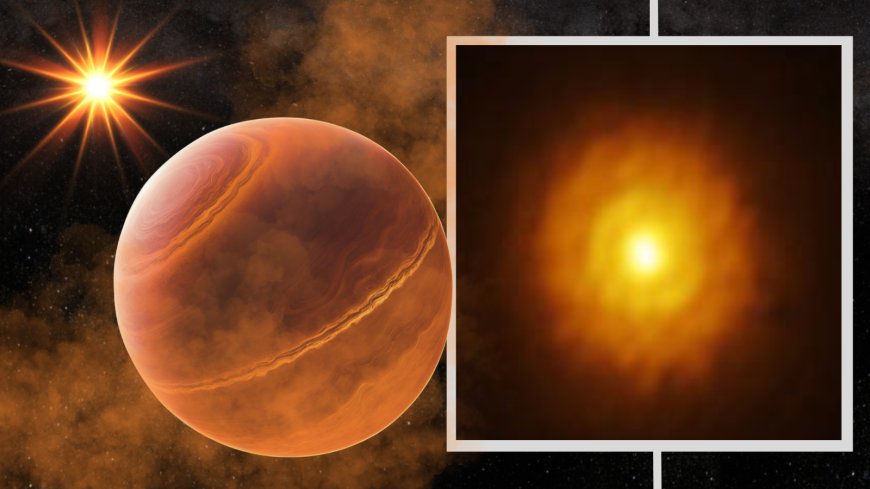Astronomers Find Giant Exoplanet in 'Stellar Fog' Around Young Star
Astronomers have discovered a massive planet, potentially ten times the size of Jupiter, emerging from the gas and dust cloud surrounding a young star. This finding, published in Nature Astronomy, sheds light on the formation of planets within protoplanetary disks.

Astronomers have spotted a monster-sized planet that could be up to ten times the size of Jupiter emerging from the stellar fog surrounding a young star.
Prior observations of the roughly 13 million-year-old star MP Mus (also known as PDS 66) located around 280 light-years away had failed to distinguish features in the swirling cloud of gas and dust, or protoplanetary disk, that surrounds it.
However, when astronomers reexamined the apparently featureless protoplanetary disk of this star using combined data from the Atacama Large Millimeter/submillimeter Array (ALMA) and the European Space Agency (ESA) Gaia mission, they found it may not be quite so lonely after all.
The team detected a huge gas giant dwelling in the protoplanetary disk of MP Mus, which had been previously hidden. This represents the first time Gaia has spotted an extrasolar planet or \"exoplanet\" sitting in a protoplanetary disk, the disks of material around young stars that birth planets.
Such detections have typically been tough due to interference from the gas and dust of the protoplanetary disk. Until now, astronomers have only made three strong detections of planets within protoplanetary disks.
This new finding could help astronomers hunt more recently formed planets around infant stars.
Young exoplanets get into the groove
Planets form within protoplanetary disks through a process called core accretion, when larger and larger particles stick together via gravity, forming planetesimals, asteroids, and eventually planets.
When material from the protoplanetary disk is swallowed up by this process, the planets created begin to carve channels in the disk, akin to the grooves in a vinyl record.
What the team found instead was a seemingly lonely star surrounded by a featureless disk of gas and dust that had none of the hallmarks of forming planets.
With their curiosity piqued, the team set about relooking at MP Mus again using ALMA, but in longer wavelengths of light. This allowed them to probe deeper into the disk, revealing a cavity in the disk close to the young star and two further \"holes\" further out, all of which were absent in the prior observations.
More than just a first for Gaia
As Ribas and colleagues were examining MP Mus with ALMA, European Southern Observatory (ESO) researcher Miguel Vioque was looking at the young star using the now-retired star tracking spacecraft Gaia.
The researchers came together, combining the Gaia and ALMA data with some computer modeling assistance to determine that the wobbling is likely caused by a gas giant with a mass between three and ten times that of Jupiter.
As well as being the first time Gaia has spotted a planet within a protoplanetary disk, this is the first time an embedded exoplanet has been indirectly discovered by combining precise star movement data from Gaia with deep observations of the disk courtesy of ALMA.
Ribas is hopeful that future ALMA upgrades, in addition to forthcoming telescopes, could be used to probe even deeper into protoplanetary disks.
The team's research was published on Monday (July 14) in the journal Nature Astronomy.
What's Your Reaction?
 Like
0
Like
0
 Dislike
0
Dislike
0
 Love
0
Love
0
 Funny
0
Funny
0
 Angry
0
Angry
0
 Sad
0
Sad
0
 Wow
0
Wow
0




















































































































































































